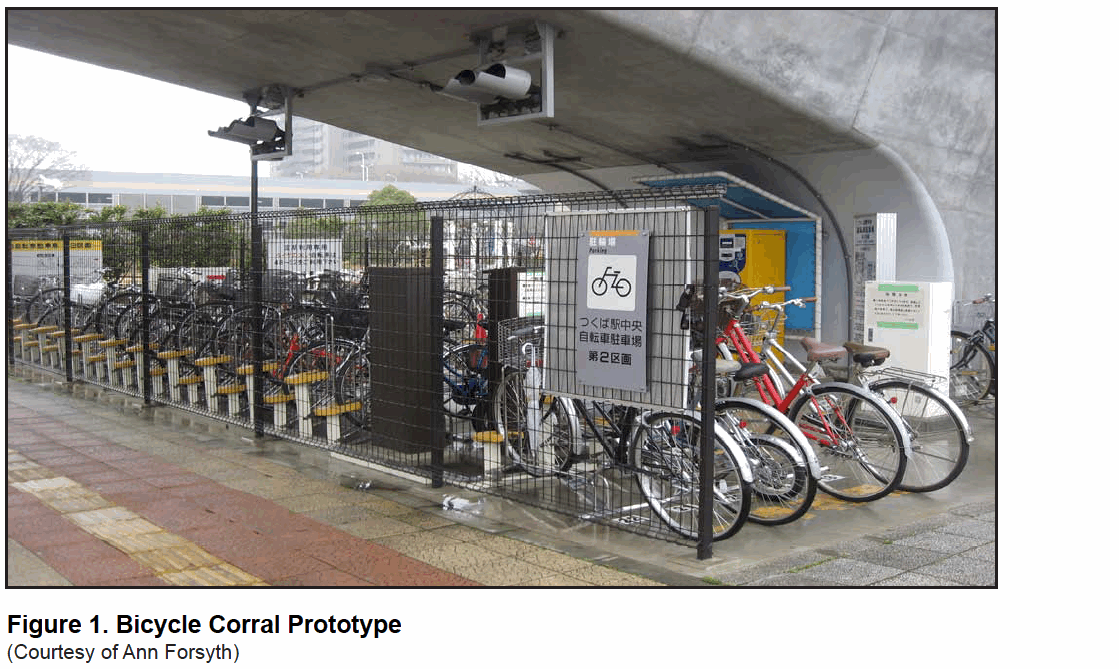MINETA TRANSPORTATION INSTITUTE
EXECUTIVE SUMMARY
When effectively integrated, bicycling and transit help advance various environmental, health, and congestion-mitigating benefits for communities. A successful integration between the two will likely increase: (a) the catchment area and subsequent patronage of transit, (b) the efficiency of transit by reducing the necessity of feeder bus services, and (c) the overall demand for cycling.
Increasingly, bicycling and transit are receiving attention in planning circles in their own right. Many countries are experiencing rising levels of cycling and available reports of transit ridership suggest that the United States had the highest transit patronage in 52 years in absolute terms in 2008 despite falling gas prices. Several studies suggest that the growth in both modes may in small part be a result of the integration of the two modes. The global recession of 2008 may also have played a role in the growth of these modes. Cycling is a top contender as a mode to enhance such access to (and egress from) transit trunk lines. According to a national survey, almost one-half of Americans live within 0.25 miles (0.4 kilometers) of a transit stop. To date, there is a minimal but growing amount of published material that comprehensively documents knowledge of how bicycling can best be integrated with transit and methodologies for systematically approaching this marriage.
A core challenge in realizing bicycle and transit integration is that the predominant approach for integrating the two modes in the United States—bicycles aboard the transit vehicle— frequently runs up against capacity restraints (typically two or three bicycles for each bus on a front rack or three to four bicycles per light rail car). While existing transit capacity for bicycles could be adjusted at the margins using this approach (e.g., through incentives, exploiting technology to enhance communication between riders), the opportunity is ripe to consider broader solutions—about which there is a dearth of information.
Effectively integrating bicycling and transit requires analysis of a broad set of alternatives. Such alternatives would fully consider: (1) the travel behavior of individuals, (2) the accompanying urban form characteristics, (3) individual preferences related to cycletransit facilities, and (4) economic costs and technological feasibility. This research project is organized around three tasks. First, the research team identified the state of the knowledge on bicycle and transit integration with specific regards to identifying transit types and locations with the potential to generate CTUs. This step included reviewing the academic literature on cycle-transit integration and gathering costs of bicycle parking from industry representatives.
Second, the authors described the approach to data collection and analysis that centers on five case study communities (Boulder/Denver, Colorado; Chicago, Illinois; Ithaca, New York; Portland, Oregon; and Santa Clara County, California). For each community, planning efforts, policies, and innovative case studies provide the context for the evaluative efforts. An evaluative framework and multicriteria decision-making tool help understand the complex factors that (1) predict cycle-transit user generation at transit stops and (2) distill the factors most important in determining cyclists’ preferences for bicycle and transit integration strategies. The authors apply this index to five case study communities to gauge CTU generation along case study routes.
Third, the research team conducted focus groups with cyclists from the five case study communities to gauge cyclists’ preferences for bicycle and transit integration strategies (hereby referred to as integration strategies). Seven focus groups were conducted in the communities during the spring of 2010.
This research relies on a variety of analytic tools. The CTU index provides a first cut to understand transit stops that have a higher likelihood to attract CTUs. Variables from the CTU index proved significant in predicting where CTU events would occur in a multiple regression analysis according to observed data provided by a local transportation authority. The Analytic Hierarchy Process, a multicriteria decision-making tool ranked cyclists’ preferences for the four bicycle and transit integration strategies in order of preference: (1) “Bike ON transit” (0.471), (2) “Bike TO transit” (0.185), (3) “Shared bike” (0.185), and (4) “Two bike” (0.159). These results form the basis for the cost effectiveness assessment, including costs of different alternatives, number of CTUs per unit, and the likely effectiveness of each alternative (a measure of the degree to which a common aim is reached). Results of the cost effectiveness assessment suggests that “Bike TO transit” ranked most cost effective overall, followed by “Bike ON transit,” “Two bike,” and “Shared bike” strategies. This project provides a baseline understanding of the effectiveness of different bicycle and transit integration strategies and makes an initial attempt at identifying transit stops on specific routes more likely to generate CTUs.
Download full report (PDF): Bicycling Access and Egress to Transit
About Mineta Transportation Institute
www.transweb.sjsu.edu
“The Mineta Transportation Institute (MTI) was established by Congress in 1991 as part of the Intermodal Surface Transportation Efficiency Act (ISTEA) and was reauthorized under TEA-21 and again under SAFETEA-LU. The Institute is funded by Congress through the US DOT’s Research and Innovative Technology Administration, by the California Legislature through the Department of Transportation (Caltrans), and by other public and private grants and donations, including the U.S. Department of Homeland Security…MTI conducts research, education, and information and technology transfer focusing on multi-modal surface transportation policy and management issues.”
Tags: Bicycling, bikes, Cycling, Mineta Transportation Institute







 RSS Feed
RSS Feed